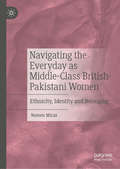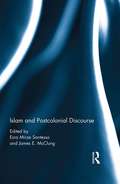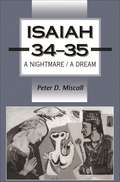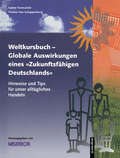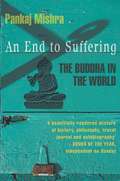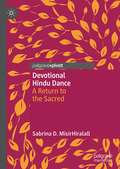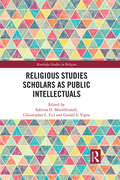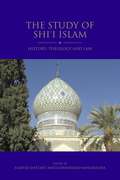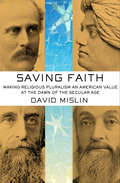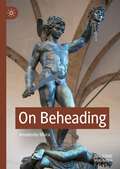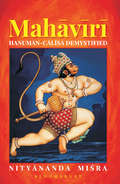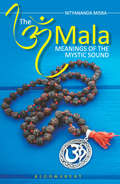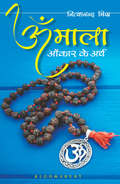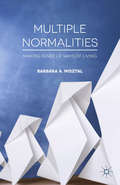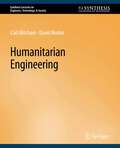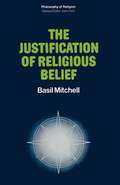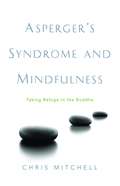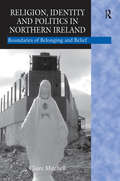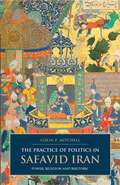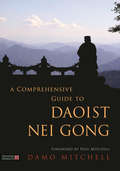- Table View
- List View
Navigating the Everyday as Middle-Class British-Pakistani Women: Ethnicity, Identity and Belonging
by Noreen MirzaThis ethnographic study of middle-class British-Pakistani women in Manchester explores the sense of belonging they create through recognition and social status. Belonging in these communities is enacted through the performance of different identities—class, ethnicity, nationality, generation, age, religion, and gender—that earn them social power and status among family and friends. To prove they are “model migrants,” worthy of respect and recognition, these women perform various and intersecting identities to maximize status and social capital in diverse situations. Far from being passive victims of racial, religious, or cultural discrimination, middle-class British-Pakistani women challenge prejudice against Muslims and British-Pakistanis through certain practices, objects, performances, and relationships, serving as ambassadors for their religious and ethnic identity through their conduct and interaction with others in daily life.
Islam and Postcolonial Discourse: Purity and Hybridity
by Esra Mirze Santesso James McClungLargely, though not exclusively, as a legacy of the 2001 attack on the World Trade Center, Islamic faith has become synonymous in many corners of the media and academia with violence, which many believe to be its primary mode of expression. The absence of a sophisticated recognition of the wide range of Islamic subjectivities within contemporary culture has created a void in which misinterpretations and hostilities thrive. Responding to the growing importance of religion, specifically Islam, as a cultural signifier in the formation of a postcolonial self, this multidisciplinary collection is organized around contested terms such as secularism, Islamopolitics, female identity, and Islamophobia. The overarching goal of the contributors is to facilitate a deeper understanding of the full range of experiences within Islam as well as the figure of the Muslim, thus enabling a new set of questions about religion’s role in shaping postcolonial identity.
Islam and Postcolonial Discourse: Purity and Hybridity
by Esra Mirze Santesso James McClungLargely, though not exclusively, as a legacy of the 2001 attack on the World Trade Center, Islamic faith has become synonymous in many corners of the media and academia with violence, which many believe to be its primary mode of expression. The absence of a sophisticated recognition of the wide range of Islamic subjectivities within contemporary culture has created a void in which misinterpretations and hostilities thrive. Responding to the growing importance of religion, specifically Islam, as a cultural signifier in the formation of a postcolonial self, this multidisciplinary collection is organized around contested terms such as secularism, Islamopolitics, female identity, and Islamophobia. The overarching goal of the contributors is to facilitate a deeper understanding of the full range of experiences within Islam as well as the figure of the Muslim, thus enabling a new set of questions about religion’s role in shaping postcolonial identity.
Isaiah 34-35: A Nightmare/A Dream (The Library of Hebrew Bible/Old Testament Studies)
by Peter D. MiscallBy a poetic analysis of Isaiah 34-35 as a single poem, the reading explores in depth its imagery, themes and structure. Attention to detail is combined with wide-ranging discussions of reading and interpretation, which revolve around the contrasting, and strangely interrelated, scenes of destruction (nightmare) and restoration (dream) found in the two parts of the poem. The poem emerges as an integral part of Isaiah, which is treated as a single work. The consistency is revealed in parallel terms, images and structure. Implications of the analysis and mode of reading for the whole of Isaiah are commented on throughout.
Weltkursbuch-Globale Auswirkungen eines „Zukunftsfähigen Deutschlands“: Hinweise und Tips für unser alltägliches Handeln
by MisereorMISEREOR soll die Armen der Dritten Welt unterstützen -warum mischt es sich dann in die Diskussionen um ein zukunftsfähiges Deutschland ein? Die Kritik ist schnell und plakativ formuliert: Misereor ist für die Armen der Dritten Welt da. Diesen notleidenden Menschen soll das Werk konkret hel fen. Wenn Misereor sich statt dessen mit Fragen eines zukunftsfähigen Deutsch lands beschäftigt, gerät es auf Abwege, verfehlt es seinen Auftrag. Diese schlagwortartigen Formulierungen enthalten eine gefährliche Mischung aus Richtigem und Falschem. Richtig ist, daß Misereor einzig dafür da ist, den Armen in der Dritten Welt zu helfen. Falsch ist, daß die Fragen um ein zukunftsfähiges Deutschland nichts mit dieser Aufgabe zu tun haben. Das wird klar, wenn man die plakativen Formulierungen einmal hinter sich läßt und genauer fragt: Wie sieht eigentlich eine Hilfe für die Armen aus, die ihnen wirklich und auf Dauer hilft? Die Antwort hat zwei Stoßrichtungen: Zum einen geht es darum, ihnen un mittelbar materielle und personelle Unterstützung zu geben. Zum anderen ist es aber ebenso wichtig, sich für eine Beseitigung der Ursachen der Armut einzusetzen. Schon bei der Gründung von Misereor hat Kardinal Frings diesen Sachver halt sehr genau beschrieben. Er sagte im August 1958: "Die Rentenreform 1957 hat mehr Menschen wirtschaftlich geholfen als alle Elisabethen-und Vinzenzvereine zusammengenommen." Deshalb müsse es die Aufgabe eines Werkes wie Misereor sein, den Armen direkt zu helfen und zugleich darauf einzuwirken, daß sich die Rahmenbedingungen für die Armen verbessern.
An End to Suffering: The Buddha in the World
by Pankaj MishraAn accomplished history of the Buddha, An End to Suffering is also a deeply personal story -- the story of Pankaj Mishra's search for meaning, for truth and peace in the modern world and, specifically, in post-colonial, independent India. As he describes his travels to unearth the origins of the Buddha, Mishra offers glimpses into his own quest for enlightenment, from childhood to September 11, from family background to friends met and made, from lessons learned to achievements as a writer. Through this, Mishra reveals the parallels between his time and the Buddha's, between their respective journeys -- and that of their country -- in search of progress and reconciliation.
Devotional Hindu Dance: A Return to the Sacred
by Sabrina D. MisirHiralallThis book sheds light on the purpose of Hindu dance as devotional. Dr. Sabrina D. MisirHiralall explains the history of Hindu dance and how colonization caused the dance form to move from sacred to a Westernized system that emphasizes culture. Postcolonialism is a main theme throughout this text, as religion and culture do not remain static. MisirHiralall points to a postcolonial return to Hindu dance as a religious and sacred dance form while positioning Hindu dance in the Western culture in which she lives.
Religious Studies Scholars as Public Intellectuals (Routledge Studies in Religion)
by Sabrina D. MisirHiralall Christopher L. Fici Gerald S. VignaThe prominence of religion in recent debates around politics, identity formation, and international terrorism has led to an increased demand on those studying religion to help clarify and contextualise religious belief and practice in the public sphere. While many texts focus on the theoretical development of the subject, this book outlines a wider application of these studies by exploring the role of religious studies scholars and theologians as public intellectuals. This collection of essays first seeks to define exactly what makes an intellectual "public". It then goes on to deal with a few questions of concern: How do public intellectuals construct knowledge in religious and theological scholarship? What is the link between public intellectuals of higher education and their role in society? Do higher education institutions have a responsibility to endorse public intellectualism? Looking at the individual and collective role of religious studies scholars and theologians in public life, this book will be of great interest to all scholars and academics involved in religious studies and theology across the academy.
Religious Studies Scholars as Public Intellectuals (Routledge Studies in Religion)
by Sabrina D. MisirHiralall Christopher L. Fici Gerald S. VignaThe prominence of religion in recent debates around politics, identity formation, and international terrorism has led to an increased demand on those studying religion to help clarify and contextualise religious belief and practice in the public sphere. While many texts focus on the theoretical development of the subject, this book outlines a wider application of these studies by exploring the role of religious studies scholars and theologians as public intellectuals. This collection of essays first seeks to define exactly what makes an intellectual "public". It then goes on to deal with a few questions of concern: How do public intellectuals construct knowledge in religious and theological scholarship? What is the link between public intellectuals of higher education and their role in society? Do higher education institutions have a responsibility to endorse public intellectualism? Looking at the individual and collective role of religious studies scholars and theologians in public life, this book will be of great interest to all scholars and academics involved in religious studies and theology across the academy.
The Study of Shi'i Islam: History, Theology and Law
by Gurdofarid Miskinzoda Farhad DaftaryShi'i Islam, with its rich and extensive history, has played a crucial role in the evolution of Islam as both a major world religion and civilization. The prolific achievements of Shi?i theologians, philosophers and others are testament to the spiritual and intellectual wealth of this community. Yet Shi?i studies has unjustly remained a long-neglected field, despite the important contribution that Shi'ism has made to Islamic traditions. Only in recent decades, partially spurred by global interest in political events of the Middle East, have scholars made some significant contributions in this area. The Study of Shi'i Islam presents papers originally delivered at the first international colloquium dedicated exclusively to Shi'i studies, held in 2010 at The Institute of Ismaili Studies, London. Within the book are eight sections, namely, history, the Qur'an and its Shi'i interpretations, ?ad?th, law, authority, theology, rites and rituals, and intellectual traditions and philosophy.Each section begins with an introduction contextualizing the aspects of studying Shi'i Islam particular to its theme, before going on to address topics such as the state of the field, methodology and tools, and the primary issues with which contemporary scholars of Shi'i studies are dealing. The scope and depth here covered makes this book of especial interest to researchers and students alike within the field of Islamic studies. The volume benefits from the diverse expertise of nearly 30 world-class scholars, including Mohammad-Ali Amir-Moezzi, Meir M. Bar-Asher, Farhad Daftary, Daniel De Smet, Gerald R. Hawting, Nader El-Bizri, Etan Kohlberg, Wilferd Madelung, Andrew Newman, Ismail K. Poonawala, Sabine Schmidtke and Paul E. Walker.
Saving Faith: Making Religious Pluralism an American Value at the Dawn of the Secular Age
by David MislinIn Saving Faith, David Mislin chronicles the transformative historical moment when Americans began to reimagine their nation as one strengthened by the diverse faiths of its peoples. Between 1875 and 1925, liberal Protestant leaders abandoned religious exclusivism and leveraged their considerable cultural influence to push others to do the same. This reorientation came about as an ever-growing group of Americans found their religious faith under attack on social, intellectual, and political fronts. A new generation of outspoken agnostics assailed the very foundation of belief, while noted intellectuals embraced novel spiritual practices and claimed that Protestant Christianity had outlived its usefulness.Faced with these grave challenges, Protestant clergy and their allies realized that the successful defense of religion against secularism required a defense of all religious traditions. They affirmed the social value—and ultimately the religious truth—of Catholicism, Judaism, Hinduism, Buddhism, and Islam. They also came to view doubt and uncertainty as expressions of faith. Ultimately, the reexamination of religious difference paved the way for Protestant elites to reconsider ethnic, racial, and cultural difference. Using the manuscript collections and correspondence of leading American Protestants, as well the institutional records of various churches and religious organizations, Mislin offers insight into the historical constructions of faith and doubt, the interconnected relationship of secularism and pluralism, and the enormous influence of liberal Protestant thought on the political, cultural, and spiritual values of the twentieth-century United States.
On Beheading
by Amalendu MisraBeheading is not an uncommon undertaking. As a particularized physical violence, it has been practiced by all societies and civilizations at some point in their history. In fact, for millennia public beheadings around the world were routine. In contemporary international society some states and many non-state actors regularly engage in this undertaking.This begs the obvious question: why put a human being through this unimaginable cruelty? While the idea of execution by decapitation appears visceral and horrific, it has always been grounded in cultural, religious and political contexts. If contemporary history is any proof, the enterprise of beheading a fellow human being appears to be making a comeback in certain religious and political landscapes.A question of enormous intellectual importance, the phenomenon of beheading is understudied. There have been many explanations surrounding specific forms of beheading through the ages. However, no inclusive study has engaged with it in its entirety.Primarily a philosophical reflection, On Beheading is inter-disciplinary in nature; it freely cuts across various disciplines within the broad framework of the social sciences. It uses a vast array of empirical evidence from anthropology, literature, jurisprudence and religion to build a discourse and narrative that brings this subject under one intellectual umbrella.
Mahaviri: Hanuman Chalisa Demystified
by Nityanand MisraThe Hanuman Chalisa authored by Goswami Tulsidas is one of the most popular Hindu devotional hymns. The 'Mahaviri' Hindi commentary (1984) by Swami Rambhadracharya has been acclaimed as the best treatise on the Hanuman Chalisa. This book presents an annotated and expanded English translation of the 'Mahaviri' commentary by Nityanand Misra.Each of the 43 verses of the 'Hanuman Chalisa' is explained in three stages. The first phase being a word-for-word translation to help the reader understand the literal meaning of each word in a verse. The second is a simple English translation of each verse. This third and final phase is an informed commentary on the true meaning of the verse, explaining the deep essence of the text with citations from authoritative Hindu scriptures (the Vedas, Upanishads, Puranas, Ramayana, Mahabharata, Gita, etc.) and other works of Goswami Tulsidas. All such citations are also translated into English.Following the commentary, Misra also provides five useful appendices for advanced readers. These include more than 120 endnotes (annotations), a detailed note on the prosody and rhythm of all the verses for chanters, the musical notation of the traditional melody of the Hanuman Chalisa for devotional singers and instrumentalists, and two alphabetical indexes for all words and verses used in the hymn.The book is a must-have for reciters and singers of the Hanuman Chalisa who want to understand the deep essence of Tulsidas's timeless hymn to Hanuman. It targets laypersons as well as scholarly readers. The design of the book, including font sizes and line spacing, is suitable for the elderly as well. The book has reached thousands of readers across the globe and has been praised as “the most comprehensive guide to the Hanuman Chalisa available in English”. It has been loved by readers for not only its scholarship and research, but also for its beautiful production, aesthetic typeface, attractive layout, and excellent footnotes and appendices.
The Om Mala: Meanings of the Mystic Sound
by Nityanand MisraThe OM Mala is a book (and a mala or a rosary) about just one word-OM. OM is one of the shortest Sanskrit words, and yet is perhaps the most powerful one, besides being a globally recognized mystic mantra.The OM Mala gives 84 names of OM from Sanskrit texts and explains their meanings in 109 sections or beads: 108 chanting beads and one 'sumeru' bead. Each bead offers the meaning(s), explanation, traditions, etymology, and quotations for one or more names of OM. The book covers rare names of OM like 'shrutipada' and 'rasa' as well as common names like 'om', 'udgitha', and 'pranava'. Popular meanings (like Brahma-Vishnu-Shiva) and rare meanings (like inhalation, holding the breath, and exhalation) are included.The book contains teachings and narratives related to OM from Veda-s, Upanishad-s, Smriti-s, Purana-s, Ramayana, Mahabharata, Gita, Yoga, Tantra, Vaishnavism, Shaivism, and Shaktism. Pearls on OM from poems, plays, and works on music and Ayurveda are presented. The use of OM in Yogic breathing and meditation is explained and the explanations/relevance of OM in Jainism, Buddhism, and Sikhism is briefly touched upon. The OM Mala is a mini-encyclopaedia on OM and associated concepts in Indian religions and culture.
Om Mala: Omkar Ke Arth
by Nityanand MisraThe OM Mala is a book (and a mala or a rosary) about just one word-OM. OM is one of the shortest Sanskrit words, and yet is perhaps the most powerful one, besides being a globally recognized mystic mantra.The OM Mala gives 84 names of OM from Sanskrit texts and explains their meanings in 109 sections or beads: 108 chanting beads and one 'sumeru' bead. Each bead offers the meaning(s), explanation, traditions, etymology, and quotations for one or more names of OM. The book covers rare names of OM like 'shrutipada' and 'rasa' as well as common names like 'om', 'udgitha', and 'pranava'. Popular meanings (like Brahma-Vishnu-Shiva) and rare meanings (like inhalation, holding the breath, and exhalation) are included.The book contains teachings and narratives related to OM from Veda-s, Upanishad-s, Smriti-s, Purana-s, Ramayana, Mahabharata, Gita, Yoga, Tantra, Vaishnavism, Shaivism, and Shaktism. Pearls on OM from poems, plays, and works on music and Ayurveda are presented. The use of OM in Yogic breathing and meditation is explained and the explanations/relevance of OM in Jainism, Buddhism, and Sikhism is briefly touched upon. The OM Mala is a mini-encyclopaedia on OM and associated concepts in Indian religions and culture.
Multiple Normalities: Making Sense of Ways of Living
by B. MisztalMultiple Normalities enhances sociological understandings of normality by illustrating it with the help of British novels. It demonstrates commonalities and differences between the meanings of normality in these two periods, exemplifying the emergence of the multiple normalities and the transformation of ways in which we give meaning to the world.
Humanitarian Engineering (Synthesis Lectures on Engineers, Technology, & Society)
by Carl Mitcham David MunozHumanitarian Engineering reviews the development of engineering as a distinct profession and of the humanitarian movement as a special socio-political practice. Having noted that the two developments were situated in the same geographical and historical space -- that is, in Europe and North America beginning in the 1700s -- the book argues for a mutual influence and synthesis that has previously been lacking. In this spirit, the first of two central chapters describes humanitarian engineering as the artful drawing on science to direct the resources of nature with active compassion to meet the basic needs of all -- especially the powerless, poor, or otherwise marginalized. A second central chapter then considers strategies for education in humanitarian engineering so conceived. Two final chapters consider challenges and implications. Table of Contents: Engineering / Humanitarianism / Humanitarian Engineering / Humanitarian Engineering Education / Challenges / Conclusion: Humanizing Technology
Asperger's Syndrome and Mindfulness: Taking Refuge in the Buddha
by Chris MitchellUnderstanding who you are can be a lonely and difficult process following the diagnosis of Asperger's Syndrome (AS). Asperger's Syndrome and Mindfulness illuminates this experience as an empowering path of discovery through the teachings of Buddhism. Chris Mitchell draws parallels between the experience of his own journey towards personhood through AS and the spiritual tenants of Theravada Buddhism, as outlined through the Eightfold Path, a guideline to personal development. Worry and anxiety, confusing desires or negative thoughts are among the everyday hindrances a person with AS faces. This book takes the reader through the key beliefs of Theravada Buddhism, such as Mindfulness and the Four Noble Truths, showing how practices such as Insight Meditation can lead to a positive resolution of these feelings. Talking openly about his own personal experiences, Chris Mitchell provides helpful tips and suggestions for improving confidence and self-esteem towards an overall better sense of self that will be of interest to anyone diagnosed with AS or their family and friends.
Asperger's Syndrome and Mindfulness: Taking Refuge in the Buddha (PDF)
by Chris MitchellUnderstanding who you are can be a lonely and difficult process following the diagnosis of Asperger's Syndrome (AS). Asperger's Syndrome and Mindfulness illuminates this experience as an empowering path of discovery through the teachings of Buddhism. Chris Mitchell draws parallels between the experience of his own journey towards personhood through AS and the spiritual tenants of Theravada Buddhism, as outlined through the Eightfold Path, a guideline to personal development. Worry and anxiety, confusing desires or negative thoughts are among the everyday hindrances a person with AS faces. This book takes the reader through the key beliefs of Theravada Buddhism, such as Mindfulness and the Four Noble Truths, showing how practices such as Insight Meditation can lead to a positive resolution of these feelings. Talking openly about his own personal experiences, Chris Mitchell provides helpful tips and suggestions for improving confidence and self-esteem towards an overall better sense of self that will be of interest to anyone diagnosed with AS or their family and friends.
Religion, Identity and Politics in Northern Ireland: Boundaries of Belonging and Belief
by Claire MitchellHas conflict in Northern Ireland kept political dimensions of religion alive, and has religion played a role in fuelling conflict? Conflict in Northern Ireland is not and never will be a holy war. Yet religion is more socially and politically significant than many commentators presume. In fact, religion has remained a central feature of social identity and politics throughout conflict as well as recent change. There has been an acceleration of interest in the relationship between religion, identity and politics in modern societies. Building on this debate, Claire Mitchell presents a challenging analysis of religion in contemporary Northern Ireland, arguing that religion is not merely a marker of ethnicity and that it continues to provide many of the meanings of identity, community and politics. In light of the multifaceted nature of the conflict in Northern Ireland, Mitchell explains that, for Catholics, religion is primarily important in its social and institutional forms, whereas for many Protestants its theological and ideological dimensions are more pressing. Even those who no longer go to church tend to reproduce religious stereotypes of 'them and us'. Drawing on a range of unique interview material, this book traces how individuals and groups in Northern Ireland have absorbed religious types of cultural knowledge, belonging and morality, and how they reproduce these as they go about their daily lives. Despite recent religious and political changes, the author concludes that perceptions of religious difference help keep communities in Northern Ireland socially separate and often in conflict with one another.
Religion, Identity and Politics in Northern Ireland: Boundaries of Belonging and Belief
by Claire MitchellHas conflict in Northern Ireland kept political dimensions of religion alive, and has religion played a role in fuelling conflict? Conflict in Northern Ireland is not and never will be a holy war. Yet religion is more socially and politically significant than many commentators presume. In fact, religion has remained a central feature of social identity and politics throughout conflict as well as recent change. There has been an acceleration of interest in the relationship between religion, identity and politics in modern societies. Building on this debate, Claire Mitchell presents a challenging analysis of religion in contemporary Northern Ireland, arguing that religion is not merely a marker of ethnicity and that it continues to provide many of the meanings of identity, community and politics. In light of the multifaceted nature of the conflict in Northern Ireland, Mitchell explains that, for Catholics, religion is primarily important in its social and institutional forms, whereas for many Protestants its theological and ideological dimensions are more pressing. Even those who no longer go to church tend to reproduce religious stereotypes of 'them and us'. Drawing on a range of unique interview material, this book traces how individuals and groups in Northern Ireland have absorbed religious types of cultural knowledge, belonging and morality, and how they reproduce these as they go about their daily lives. Despite recent religious and political changes, the author concludes that perceptions of religious difference help keep communities in Northern Ireland socially separate and often in conflict with one another.
The Practice of Politics in Safavid Iran: Power, Religion and Rhetoric (British Institute of Persian Studies)
by Colin P. MitchellThe Safavid dynasty originated as a fledgling apocalyptic mystical movement based in Iranian Azarbaijan, and grew into a large, cosmopolitan Irano-Islamic empire stretching from Baghdad to Herat. Here, Colin P. Mitchell examines how the Safavid state introduced and moulded a unique and vibrant political discourse, reflecting the social and religious heterogeneity of sixteenth-century Iran. Beginning with the millenarian-minded Shah Isma'il and concluding with the autocrat par excellence, Shah Abbas, Mitchell explores the phenomenon of state-sponsored rhetoric. A thorough investigation of the Safavid state and the significance of rhetoric, power and religion in its functioning, The Practice of Politics in Safavid Iran is indispensable for all those interested in Iranian history and politics and Middle East studies.
A Comprehensive Guide to Daoist Nei Gong
by Damo MitchellA complete and detailed explanation of the Nei Gong process. Explaining the philosophy at the core of Daoist Nei Gong, and illustrated with detailed figures throughout, this fascinating text will be of interest to practitioners of Qi Gong, martial arts and practitioners, and to anyone interested in Eastern philosophy.
A Comprehensive Guide to Daoist Nei Gong
by Damo MitchellA complete and detailed explanation of the Nei Gong process. Explaining the philosophy at the core of Daoist Nei Gong, and illustrated with detailed figures throughout, this fascinating text will be of interest to practitioners of Qi Gong, martial arts and practitioners, and to anyone interested in Eastern philosophy.
